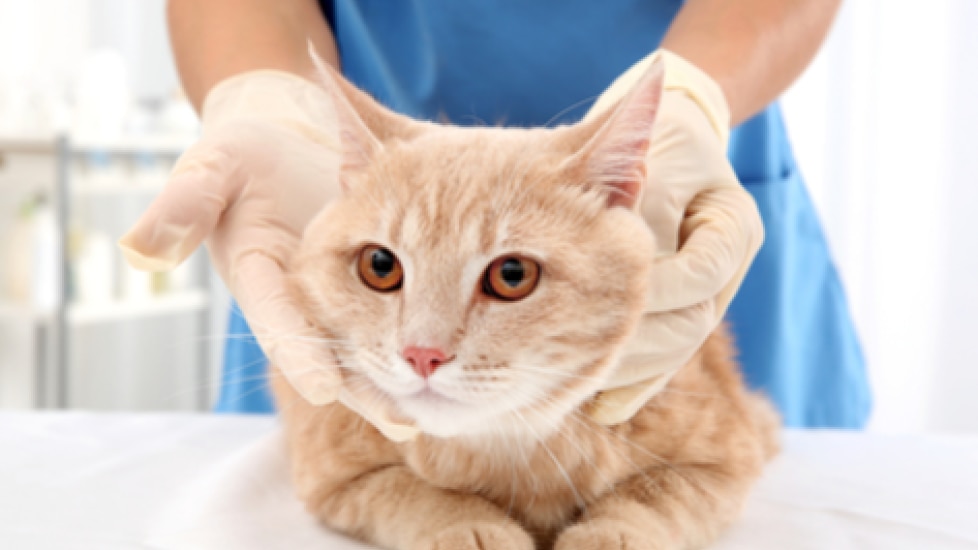What Makes a Cat’s Coat Feel Greasy?
This article was verified and edited for accuracy by Dr. Katie Grzyb, DVM.
There’s almost nothing better than snuggling up to our furry feline friends at the end of a long day, which is why most cat owners are sure to notice when something is different about their pet’s fur.
“Cats are generally incessant self-groomers, and not for vain reasons,” says Dr. Alan Schwartz of Compassion Veterinary Health Center in Poughkeepsie, New York. “It is believed their saliva has antibacterial properties. A properly self-groomed adult cat has a somewhat dry and soft feel, with no mats.”
As a trained feline veterinarian, Schwartz says he can close his eyes and feel his cat patients’ skin and generally be able to tell if they are healthy are not. But you don’t have to be a vet to know something’s off with your cat’s fur—you’ve been patting your cat long enough to know when something doesn’t feel right. If your cat’s fur has been greasy or oily lately, there is likely an underlying reason why.
Common Reasons for Oily or Greasy Cat Fur
A cat with greasy or oily fur could be generally healthy, or there could be some underlying health issues that need to be considered. A cat who has stopped grooming could be overweight, says Schwartz. Overall lethargy or laziness may stop an obese cat from grooming, or it may actually be physically difficult for him to reach certain areas to maintain his normal state of cleanliness. “We generally would feel greasy fur [in obese cats] along with scales and dandruff along the top of the furthermost area of the back,” Schwartz says.
Besides obesity, other medical reasons for unkempt or greasy fur in cats can include arthritis, dental disease and oral conditions, diabetes, hyperthyroidism, or a spectrum of internal medical issues. Any one of these medical conditions can make it difficult or uncomfortable for your cat to contort himself into a normal grooming position. Pain from any of those conditions might make him too tired overall to maintain a traditional grooming routine.
How to Treat Your Cat’s Greasy Hair
It’ll be important to take note of whether your cat’s coat change is coupled with other symptoms—like changes in eating, drinking, or urinating patterns, lethargy, or a lack of self-grooming—but any change in the quality of hair coat is concerning in cats and warrants a visit to the vet, says Dr. Stephanie Liff, medical director of Pure Paws Veterinary Care in Manhattan.
Remember that a decrease in grooming is often secondary to illness or metabolic changes in your cat, and your veterinarian will need to assess your cat in person to determine the underlying issue and develop a plan. “Weight loss can also lead to a shiny or greasier coat, which can be secondary to a myriad to conditions that the vet can discuss once they see the cat,” Liff adds.
A vet who receives a cat as a patient who is suffering from an oily or greasy coat will likely recommend blood work and a urinalysis, and possibly some tests for superficial skin conditions like mites or allergies, Liff says. “The thorough physical exam may lead the veterinarian in one direction or another in terms of what they think the cause of the issue is,” she adds. “These conditions can often be treated, but depending on the cause, they may require lifelong therapy. For example, many diabetic cats require lifelong insulin, although up to 30 to 40 percent of diabetic cats will revert to a non-diabetic state” if appropriate dietary requirements are adhered to.
Essentially, the treatment for your cat’s greasy fur issue will all depend on the cause, which only your vet can help determine. Keep in mind that some causes of greasy fur will be easier to take care of than others. If your cat is obese, for example, speak with your vet about making healthy changes to her overall diet or the food she eats, cut back on treats, and be sure to provide lots of active toys for self-play for when you aren’t around, along with plenty of one-on-one play time between you and your cat when you are home.
If it’s determined that your pet’s fur problem has an underlying medical cause, your vet will help you determine whether traditional medicine or alternative medicine like physical therapy or homeopathic aid could help.
This article was verified and edited for accuracy by Dr. Katie Grzyb, DVM.
